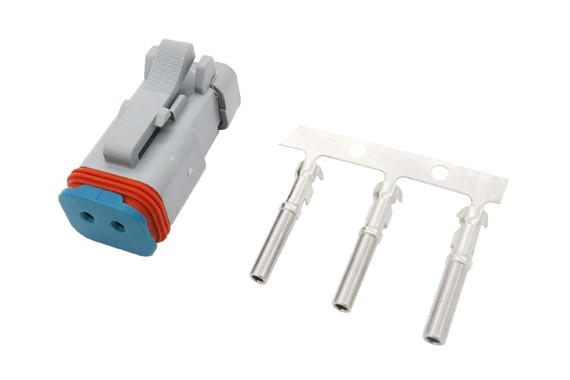Terminal wiring in the connector
Termination refers to the way the connector's contact is connected to a wire or cable. Proper selection of termination methods and proper use of termination techniques are also an important aspect of using and selecting connectors.


welding
The most common weld is welding. The most important solder joint is the metal continuity between the solder and the surface to be soldered. Therefore, the solderability of the connector is important. The most common coatings on the soldered ends of connectors are tin alloys, silver and gold. Reed contacts have common soldering, soldering and notched solder tabs: the common arc welding end of the pinhole contacts has a drilled arc notch.
crimping
Crimp is a technique used to compress and replace metal and connect wires to contact pairs within a specified range. A good crimp connection creates a metal interflow that causes the wires and contacts to symmetricalally deform the material. This connection is similar to a cold welded joint and provides better mechanical strength and electrical continuity and can withstand harsher environmental conditions. The correct crimp connection is generally considered to be superior to soldering, especially in high current applications where crimping is required. Special crimping pliers or automatic and semi-automatic crimping machines are required for crimping. The wire box of the contact pair should be correctly selected according to the wire cross section. It should be noted that the crimp connection is a permanent connection and can only be used once.
Packaging
Winding is to wrap the wire directly around the angular contact sleeve. When wound, the wire is wound under tension, pressed and secured to the corners of the contact sleeve to form a sealed contact. There are several requirements for the winding wire: the nominal value of the wire diameter should be in the range of 0.25 mm to 1.0 mm; when the wire diameter is not more than 0.5 mm, the elongation of the conductor material is not less than 15%. When the wire diameter is larger than 0.5 mm, the material elongation of the conductor is not less than 20%. Wound tools include guns and fixed wraps.
Pierced
Puncture connections, also known as insulation displacement connections, are a new type of termination technology invented in the United States in the 1960s. It has the characteristics of high reliability, low cost and convenient use. It has been widely used in various connectors for printed circuit boards. In. Suitable for connection of ribbon cables. The connection does not require the insulation of the cable to be stripped, and the tip of the "U" shaped contact spring of the connector is inserted into the insulation so that the conductor of the cable slides into the groove of the contact and the spring is clamped so that the cable conductor A tight electrical connection is formed with the connector reed. It only requires a simple tool, but it must use a cable with the specified wire gauge.
Screw connection
The screw connection is made via the screw terminal. Pay attention to the maximum and minimum cross-section of the connecting line and the maximum tightening torque allowed for screws of different sizes.
Yeahui is a connector cable supplier with 11 years of experience in developing high quality connectors and wiring harnesses. we have many types of products, including obd connector, circular connector, agricultural connector and so on. We can meet the requirements of various customers. Feel free to learn more about connectors or buy our connectors, looking forward to your message.
Read more about the connectors(Why use a connector).
评论
发表评论